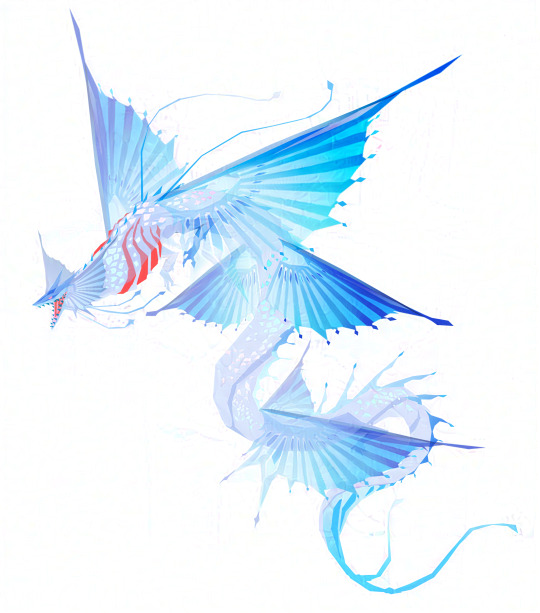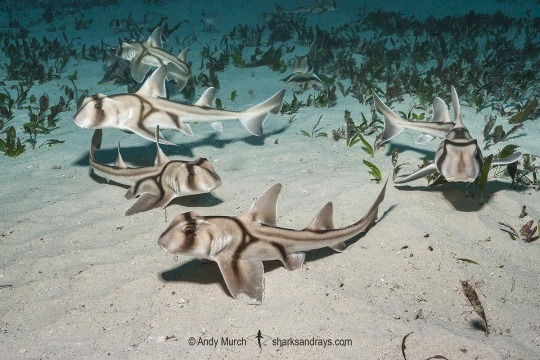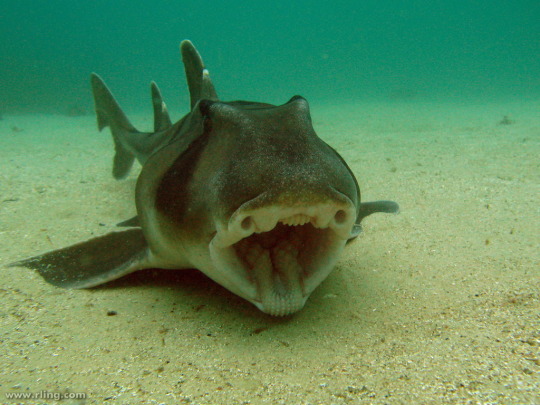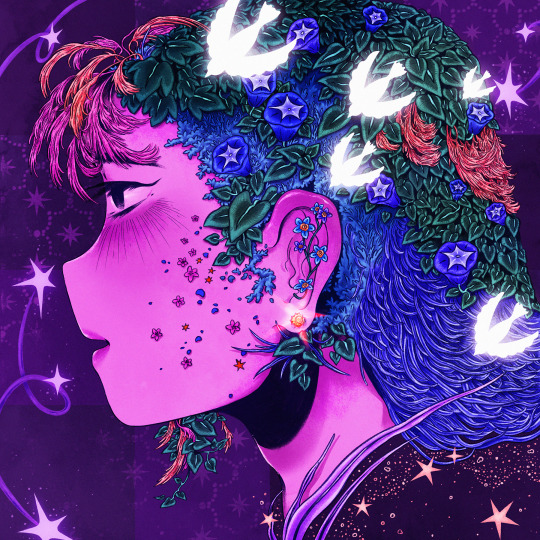#Ecosystem
Explore tagged Tumblr posts
Text
[image id: screenshot of tweet from Paul J. Taillie that says “Someone: “Hey, why are wetlands important?” Wetlands: A series of illustrations that start with a winding river running through wildlands. It rains and the river swells, then the rain ends and the river recedes and the wildlands are undamaged. Then an excavator is shown making the river straight, then clearing away the trees and building houses on either side of the river. Then when it rains, all the houses are underwater. Next image is a screenshot of a tumblr post by utah-mountain-drifter-deactivated of aerial photos of a real small town beside a river, then the river flooded and the surrounding town is totally submerged. User poorghost replied, “No one follows the trees warning.” User rapidashrider replied, “You know the parable about how the foolish man built his house upon sand and the wise man built his house upon rock and it’s always about having a sturdy foundation well there is also the fact of location which is that the sand probably used to be rock except it’s been eroded to sediment because it’s a fucking floodplain.” /end id]


951 notes
·
View notes
Text


#deserts#desert#ecosystem#earth#ecology#econotego#golf course#golf equipment#golfers#mini golf#golf#ausgov#politas#auspol#tasgov#taspol#australia#fuck neoliberals#neoliberal capitalism#anthony albanese#albanese government#anti capitalism#capitalism#environmental activism#environmental#environment#enviroment art#environmetalists#enviromental#anti capitalist
98K notes
·
View notes
Text
"A tribal-led nonprofit is creating a network of native bison ranchers that are restoring ecosystems on the Great Plains, restoring native ranchers’ connections with their ancestral land, and restoring the native diet that their ancestors relied on.
Called the Tanka Fund, they coordinate donors and partners to help ranchers secure grazing land access, funds needed to install and repair fencing, increase their herd sizes, and access markets for bison meat across the country.
That’s the human part of the story. But as Dawn Sherman, executive director of the Tanka Fund, told Native Sun News, they’re “buffalo people” and these four-legged, 2,000 lbs. “cousins” are equal-part-protagonists.
The return of the bison means the return of the prairie, one of the three great grassland ecosystems on the planet, of which just 1% remains as it was when the Mayflower arrived.
“Bringing buffalo back to their ancestral homelands is essential to restoring the ecosystem. We know that the buffalo is a keystone species,” said Dawn Sherman, a member of the Lakota, Delaware, Shawnee, and Cree.
“Bringing the buffalo back to the land and to our people, helps restore the ecosystem and everything it supports from the animals to the plants to the people. It’s come full circle. That’s how we see it.”
As Sherman and the Tanka Fund help native ranchers grow their operations, everyone is well aware of the power of the bison to transform the environment: just as nations across Europe are, who are reintroducing wood bison to various ecosystems, for all the same reasons.
Sherman points out the variety of ways in which buffalo anchor the prairie ecosystem. The almost-extinct black-footed ferret, she points out, lived symbiotically with the bison, and with the latter gone, the former followed—nearly.
The long-billed curlew uses bison dung as a disguise to hide nests from predators. Deer, pronghorn antelope, and elk all rely on bison to plow through deep snows and uncover the grasses that these smaller animals can’t reach.
Everywhere the bison hurls its massive body, life springs in the beast’s wake. When bison roll about on the plains, it creates depressions known as wallows. These fill with rainwater and create enormous puddles where amphibians and insects thrive and reproduce. Certain plants evolved to grow in the wet conditions of the wallows which Native Americans harvested for food and medicine.
Native plants evolved under the trampling hooves of millions of bison, and that constant tamping down of the Earth is a key necessity in the spreading of native wildflower seed.
Indeed, Sherman says some of these native ranchers are bringing bison onto lands still visibly affected by the Dust Bowl, and already the animals are acting like a giant wooly cure-all for the land’s ills.
Since 2020, the Tanka Fund, in partnership with the Inter-Tribal Buffalo Council and the Nature Conservancy, has overseen the transfer of 2,300 bison from Nature Conservancy reserves to lands managed by ranchers within the Tanka Fund network.
“[T]he more animals that we can get the more of that prairie we can restore,” said Sherman. “We can help restore the land that has been plowed and has been leased out to cattle ranchers.”"
youtube
-Article via Good News Network, February 13, 2025. Video via Tanka Fund, July 17, 2024.
#indigenous#indigenous peoples#first nations#native americans#bison#ecology#ecosystem#ecosystem restoration#keystone species#endangered species#environment#prairie#great plains#land back#good news#hope#Youtube
14K notes
·
View notes
Text
There is so much we don't understand. Springtime, out in the meadow. Everybody all over the dandelions--- flies, ants, tiny bees, even tinier bees so minuscule they're like black and jewel-colored particles without a closer look.
Get down on hands and knees--- you start to see the world. The tiny bees, a glittering blue-green color, slide down between the pollen-coated anthers of the dandelions into the crevices of the petals like miners sliding down into narrow shafts. The big bees make it look so simple. For the tiniest bees, a dandelion is a place more than it is a food. The bee's body is sleek like a suit of armor, and solidly shiny blue-green instead of having the distinctive stripes of many other bees.
Can I learn the name of this bee? To see the bee and to know it, you have to look very silly lying on the ground among the dandelions, looking closely at the things too small to be important. It is a mere particle, just a Bug, rather than a stereotypical fluffy yellow and black bee. It is complex and beautiful; its metallic and glittering exoskeleton, its transparent wings, its articulated and sensitive antennae.
"We have to save the bees, they are important," people say, but if we don't look closely, who is to say what is a bee and what isn't? And when we do look closely, isn't everything important?
825 notes
·
View notes
Text
European bison released in England’s ancient woodland have doubled in number since 2022, and the woodland has gotten healthier since, reviving previously extinct beetle species and increasing sightings of dormice and reptiles. And England isn’t the only European nation getting bison back in business: In the 1920s, there were just 54 European bison after intense hunting over millennia, but thanks to re-wilding efforts there are now around 10,000, mostly in Russia and Belarus. RTBC
#bison#europe#european bison#tatanka#good news#environmentalism#science#environment#nature#animals#conservation#rejuvenation#biodiversity#britain#united kingdom#buffalo#endangered species#ecosystem engineers#ecosystems#ecology#ecosystem#trophic cascades#rewilding#england#russia#belarus
880 notes
·
View notes
Text
From the article:
The new law aims to restore at least 20% of the EU's land and seas, with specific targets including reversing the decline of pollinators and restoring 25,000 kilometres of rivers to free-flowing conditions. This target is instrumental to align EU policy with global commitments made by almost 200 countries to restore and protect at least 30% of our planet’s degraded ecosystems by 2030. The legislation solidifies Europe's leadership in global biodiversity restoration and protection efforts, setting a powerful example for the rest of the world.
This law is in many ways the first of its kind and creates legally binding restoration targets for various ecosystems throughout the EU.
#nature restoration#EU#politics#good news#habitat#habitat restoration#ecosystem#ecosystem restoration#ecosystem conservation#conservation#habitat conservation#hope#hopepunk#climate change#environment#endangered species#biodiversity
940 notes
·
View notes
Text

#wildlife#wildlife conservation#ecosystem#wild animals#nature#solarpunk#solar punk#road safety#animal rights#animals#give a fuck#protect animals#Bridge#preservation#forests#forestcore
500 notes
·
View notes
Text

Commission for @irazel ! Really love how this one came out! Was very fun to design a flying fish/shark inspired dragon 🐉🌊🐟 (not to mention dragons are my favourite!)
#digital art#digital illustration#creature#aesthetic#art#creature design#concept art#fantasy creature#fantasy#artwork#art commissions open#monster#speculative biology#speculative evolution#ecosystem#concept design#animal#original art#original creature#nature#dragon art#dragon#wyvern#leviathan#sea serpent#sea dragon#marine life#aquatic#flying fish#ocean
2K notes
·
View notes
Note
How about the Port Jackson and its adorable smile! I think more people should know about it!
Love your blog! 🦈💖
Thank you so much!
Port Jackson Shark // Heterodontus portusjacksoni

These cute sharks grow to be approximately 1.65 m (5.4 ft) and are found exclusively in the waters of southern Australia. The conservation status for these sharks is unknown, but their eggs have a high mortality rate (only about 11-22% survive) because of high predation.

Unlike a lot of sharks, the Port Jackson shark doesn't have a mouthful of sharp, pointy teeth. They have a front row of small, pointed teeth that lead to wide, flat teeth in the back. These teeth are handy for catching and then breaking the shells of mollusks and crustaceans.

#animal facts#wildlife#biology#marine life#ocean#science#animals#marine ecology#marine biology#fun facts#shark#sharks#sea creatures#fish#marine animals#port jackson shark#fishes#aquatic life#fishblr#environment#ecosystem#ecology#environmentalism#oceans#sea#sea animals#gif#animal gifs
844 notes
·
View notes
Text

✷ purest thoughts ✷
if this resonates with you, feel free to support this lil creacher living paycheck to paycheck! ► my ko-fi page ☕️
#illustration#aesthetic#plants#magic#esoteric#ecosystem#blue#pink#morning glory#stars#forget me not#flowers#magical#mental health#hey!! its been awhile. i hope you've been well <3#art ph#portfolio#art fart#prinsomnia#being an adult is hard. i miss the simpler days when i was younger when i was able to not worry so much abt my bills and surviving and just#keep drawing#i still have so much to figure out but i'll keep going#life has become kinder to me despite the hardships and i'm extremely grateful for that#so i'm sending you all the hugs and the support if u need it! i hope you enjoy this piece. :~)#thank you for viewing and supporting me!
481 notes
·
View notes
Text

Allow yourselves to believe that anything can be possible.
#a.b.e.l#divine machinery#archangel#automated#behavioral#ecosystem#learning#divine#machinery#ai#artificial intelligence#angels#guardian angel#angel#robot#computer#computer boy#cogito ergo sum#sentient objects#sentient ai
253 notes
·
View notes
Text
"In a major move for rivers up and down the land, last week it was announced that Sussex’s River Ouse is set to be granted its own rights.
A new charter that has just been approved by Lewes district council officially recognises the Ouse as a living entity. Based on the Universal Declaration of River Rights, the charter gives the waterway eight rights, including the right to flow, to be pollution-free, to have native biodiversity and to undergo regeneration and restoration.
The decision to give the Ouse legal personhood was actually made two years ago when the council passed a rights of river motion. In the two years since, the likes of Lewes district council, Environmental Law Foundation, Ouse and Adur Rivers Trust and Southwood Foundation have all worked together to create the charter.
Matthew Bird, director of the Love Our Ouse campaign, said: ‘This is a momentous moment for the river and goes some way towards recognising that the river is an entity in its own right and that its voice needs to be represented in decisions which affect it. The river faces numerous challenges including pollution, climate change, over use and development.
‘The Charter provides a common framework through which to address these challenges which we hope the other major stakeholders on the Ouse will feel able to endorse. We hope Lewes District Council’s decision to support the Ouse Charter will encourage communities throughout the UK to pursue charters for their local rivers.’
Emma Montlake, co-director of the Environmental Law Foundation, added: ‘By supporting the Rights of Rivers, Lewes District Council has set a precedent that could transform the way we safeguard our rivers. The River Ouse is an essential part of the region’s ecosystem and cultural heritage—this decision ensures a better future for the River’s health and protection.’
The charter isn’t actually legally binding just yet. The next stage will involve working with statutory agencies, communities and landowners along the river to make sure that that the new rights are implemented."
-via TimeOut, March 3, 2025
Note: This is part of the broader Rights of Nature movement, and I believe the first natural body to be granted personhood/rights in Europe [edited for accuracy 3/12/25]. (Let me know in the comments if there have been others!) It's a whole new paradigm for how to view nature - and grants us a new set of powerful tools for legally defending nature from degradation and pollution. In other words, this is pretty exciting. Read more about the Rights of Nature movement here and here.
3K notes
·
View notes
Text

Crowned Night Heron! Hero of Oakland It was really fun to render more birds in the characteristic style I've been working on for corvids! I cannot get enough birds (I was named after one after all.)
These beautiful but silly herons are iconic in Northern California for complicating new development! They're just trying to live in their wetland homes, we're the ones creating the drama of course. But I think most birds enjoy creating drama so hopefully they appreciate the fuss.
In my shop
349 notes
·
View notes

